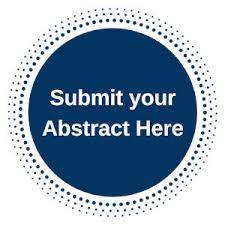Sessions / Tracks
Track 1: Retina & Eye Disorder
Many eye ailments have no early side effects. They might be easy, and you may see no adjustment in your vision until the malady has turned out to be very best in class. The absolute most ideal approach to secure your vision is through standard expert eye examinations. Obviously, between examinations, in the event that you see an adjustment in your vision – or you think your eye might be harmed in any capacity – contact your eye mind proficient quickly and eye infections have no early symptoms. They may be easy, and you may see no alteration in your vision until the contamination has ended up being absolute best in class. Without a doubt the best way to deal with secure your vision is through standard master eye examinations. Clearly, between examinations, if you see an alteration in your vision – or you think your eye may be hurt in any way – contact your eye mind capable instantly.
Track 2: Cataract & Its treatments
Waterfalls are an exceptionally normal eye condition. As you get more established the focal point inside your eye bit by bit changes and turns out to be less straightforward (clear). A focal point that has turned dim, or shady, is said to have a waterfall. After some time a waterfall can deteriorate, progressively making your vision mistier. A direct operation can as a rule expel your cloudy focal point and supplant it with a counterfeit focal point to empower you to see all the more unmistakably once more. This guide is about waterfalls in grown-ups. A few youngsters create waterfalls, called inherent waterfalls, before or soon after birth however these are generally managed contrastingly to waterfalls in grown-ups.
Track 3: Dry Eye
Dry eye infection and bolstered inside a thorough order system. Another meaning of dry eye was created to reflect ebb and flow comprehension of the infection, and the board of trustees suggested a three-section characterization framework. The initial segment is etiopathogenic and outlines the various reasons for dry eye. The second is unthinking and indicates how each reason for dry eye may act through a typical pathway. It is focused on that any type of dry eye can collaborate with and fuel different types of dry eye, as a component of an endless loop. At last, a plan is displayed, in light of the seriousness of the dry eye sickness, which is required to give a normal premise to treatment. Word related elements may bring about a moderate flicker rate, speaking to a hazard for dry eye in those working with video show terminals. Different exercises related with diminished flickering and an expansion in palpable width, incorporating that related with up gaze, have been accounted for to convey a hazard for the improvement of dry eye indications. Dry eye disorder alludes to a gathering of scatters of the tear film that are because of lessened tear creation or unreasonable tear dissipation related with visual distress or potentially visual indications and conceivable illness of the surface.
Track 4 : Optometry
Optometry is an eye care profession associated with the vision and visual system where information is processed to produce an image. Optometrists also called as ophthalmic optician and are qualified to diagnose & treat eye diseases. This scientific track welcomes the participant to participate and explore the insights of optometry and vision science.
Track 5 : Glaucoma
Glaucoma is a confused ailment in which harm to the optic nerve prompts dynamic, irreversible vision misfortune. Glaucoma is the second driving reason for visual impairment. Glaucoma is an illness of the eye in which liquid weight inside the eye rises - if left untreated the patient may lose vision, and even end up plainly visually impaired. The sickness for the most part influences the two eyes, albeit one may have more serious signs and indications than the other. There is a little space in the front of the eye called the "foremost chamber". Clear fluid streams all through the foremost chamber, this liquid sustain and wash adjacent tissues. In the event that a patient has glaucoma, the liquid does not deplete legitimately - it empties too gradually - from the eye. This prompts liquid develop, and weight inside the eye rises. Unless this weight is cut down and controlled, the optic nerve and different parts of the eye may end up plainly harmed, prompting loss of vision.
Track 6: Clinical Ophthalmology
Clinical ophthalmology is the branch of therapeutic research managing eye physiology, eye infections and treatment modalities. Test Ophthalmology manages the current research in the field of Ophthalmology and the systems used to determine an ophthalmic issues whereas Clinical Ophthalmology is for the most part associated with considers and clinical discoveries of different eye disorders and in addition techniques engaged with the care of ophthalmic patients. Clinical ophthalmology perform analyze and works on eyes, by clinical systems a large number of maladies and conditions can be analyzed from the eye. It additionally comprise of concentrates identified with ophthalmic surgical investigations, translational research and visual therapeutics and so on. Clinical ophthalmology contemplates contains clinical research about expansive range of eye sicknesses.
Track 7: Cornea
The cornea is the straightforward front piece of the eye that covers the iris. But factors such as corneal ulceration, epithelial keratitis & drug-induced epithelial keratitis, corneal regeneration, recurrent corneal erosion and miscellaneous corneal disorders can affect the cornea and ultimately lead to the external eye disease that could end up with permanent blindness. Hence investigation of corneal disease is carry out to mitigate the disease and methods like Contact lees & vision correction is also used to cure the vision related problems and surgical procedure like corneal transplantation is used to transplant the cornea.
Track 8: Pediatric ophthalmology
Pediatric ophthalmology is a sub-branch of ophthalmology associated with eye ailments, visual functions, and vision care in kids. The pediatric ophthalmologist gets further training to provide supervision to young patients. Neurologic improvement of vision happens up until around age 12 years. Misalignment of the eyes (strabismus), uncorrected refractive mistake (nearsightedness, hyperopia, and astigmatism), and asymmetry of refractive errors between the two eyes can contrarily influence this advancement. If these conditions not treated on time than it will affect the vision permanently. Pediatric ophthalmologists are eligible to perform ocular surgery along with the management of children’s eye diseases with glasses and pharmacological approach.
Track 9: Cataract & Its treatments
Waterfalls are an exceptionally normal eye condition. As you get more established the focal point inside your eye bit by bit changes and turns out to be less straightforward (clear). A focal point that has turned dim, or shady, is said to have a waterfall. After some time a waterfall can deteriorate, progressively making your vision mistier. A direct operation can as a rule expel your cloudy focal point and supplant it with a counterfeit focal point to empower you to see all the more unmistakably once more. This guide is about waterfalls in grown-ups. A few youngsters create waterfalls, called inherent waterfalls, before or soon after birth however these are generally managed contrastingly to waterfalls in grown-ups.
Track 10: Ocular Oncology
Ocular oncology is the branch of medication managing tumors identifying with the eye and its adnexa. Visual oncology thinks about that the essential prerequisite for patients is protection of life by expulsion of the tumor, alongside best endeavors coordinated at safeguarding of valuable vision, trailed by restorative appearance. The treatment of visual tumors is by and large a multi-claim to fame exertion, requiring coordination between the ophthalmologist, restorative oncologist, radiation expert, head and neck specialist/ENT specialist, pediatrician/inner pharmaceutical/hospitalist and a multidisciplinary group of care staff and medical caretaker.
Track 11: Ocular Microbiology and Immunology
Fungi, parasites, bacteria and virus can enter the human body and are capable enough to spread to attack the interior surface of an eye thus spreading the infection. The immune system plays a crucial role to inhibit the effect of infections of eye and also during the corneal transplantation since transplantation is increasing rapidly. This scientific track highlights the significance and connection of ocular microbiology and immunology.
Track 12: Ophthalmic Research and Drug Delivery
The aim and scope of ophthalmic research is to study the diseases minutely to eradicate the problems associated with vision and eye health. With the latest technological development and modern treatments in the field of ophthalmology the new techniques have been significantly improvising the life of humans. The detection of diseases through biomarkers aid the efficacy of treatment and new technological procedure such as stem cell, tissue science and use of biomaterial can change the perception of human vision. This scientific track dedicated to the latest technology, amendments, techniques and procedures in the field of Ophthalmology.
Track 13 : Vision Science
Vision science is the scientific study of vision. Vision science encompasses all studies of vision, such as how human and non-human organisms process visual information, how conscious visual perception works in humans, how to exploit visual perception for effective communication, and how artificial systems can do the same tasks.
Track 14 : Retina & Eye Disorder
Many eye ailments have no early side effects. They might be easy, and you may see no adjustment in your vision until the malady has turned out to be very best in class. The absolute most ideal approach to secure your vision is through standard expert eye examinations. Obviously, between examinations, in the event that you see an adjustment in your vision – or you think your eye might be harmed in any capacity – contact your eye mind proficient quickly and eye infections have no early symptoms. They may be easy, and you may see no alteration in your vision until the contamination has ended up being absolute best in class. Without a doubt the best way to deal with secure your vision is through standard master eye examinations. Clearly, between examinations, if you see an alteration in your vision – or you think your eye may be hurt in any way – contact your eye mind capable instantly.
Track 15 : Ophthalmic Surgery
Ophthalmic surgery, generally called visual surgery, can't avoid being surgery performed on the eye or its adnexa, usually by an ophthalmologist. The eye is a sensitive organ, and requires phenomenal care some time as of late, in the midst of, and after a surgical procedure. An expert eye pro is accountable for picking the fitting surgical technique for the patient, and for taking the essential prosperity protections. Notification of eye surgery can be found in a couple of out of ancient texts. Today it continues being a comprehensively sharpened sort of surgery, having made distinctive techniques for treating eye issues.
Specialist predicts that the overall eye mind surgical market will create at a CAGR of more than 15% by 2020. The most surely understood eye issue joins waterfall, diabetic retinopathy and glaucoma. There is an important addition in the event of eye ailments over the globe, especially in industrialized and focus compensation countries. With the high occasion rate of diabetes and strength among the immature, the chances of vision hardship and a couple of eye issue have extended unmistakably. Individuals with diabetes have an extended risk of being impacted by diabetic retinopathy and macular edema. This creating normality of diabetic eye sicknesses will fabricate the gathering a couple of eye laser techniques, thusly decidedly influencing the eye mind surgical market in the coming years.
Track 16 : Perception and Visual Cognition
Perception and Visual cognition are based on the methods that incorporate psychophysics, eye movements, electrophysiology, structural and functional neuroimaging, as well as computational modelling. Visual search, spatial vision, perceptual organization, object recognition, semantic processing and categorization, face perception, visual neglect, visual agnosia, perception for action, visual working memory, inhibition and cognitive control, reading, and social vision.
Track 17 : Nano Ophthalmology
Nanotechnology has numerous applications in scatters of the eye, which could be incorporated under the heading of Nano-ophthalmology. These incorporate medication conveyance, investigation of patho mechanism of eye sicknesses, recovery of the optic nerve, and balancing neovascularization engaged with some degenerative issue. Nanoparticles empower conveyance of visual medications to particular target locales, and results to date firmly propose that ophthalmology will profit colossally from the utilization of this Nano metric scale innovation.
Track 18 : Optics neuropathy
It is damage of the optic nerve because of any cause. Damage and death of these nerve cells, or neurons, leads to characteristic features of optic neuropathy. The main symptom is loss of vision, with colors appearing subtly washed out in the affected eye. On medical examination, the optic nerve head can be visualized by an ophthalmoscope. Optic neuropathy is often called optic atrophy, to describe the loss of some or most of the fibers of the optic nerve.
Track 19: Aging and Vision Impairment
Vision loss among the older is a significant medical care issue. Around one individual in three has some type of vision-decreasing eye sickness by the age of 65. Age-related macular degeneration is described by the deficiency of focal vision. Essential open-point glaucoma brings about optic nerve harm and visual loss. Since this condition may at first be asymptomatic, ordinary screening assessments are suggested for older patients. A cataract is a typical reason for vision weakness among the old; the however medical procedure is regularly successful in re-establishing vision. Diabetic retinopathy might be seen in the old at the hour of finding or during the initial not many long stretches of diabetes.
-
Presbyopia
-
Keratoconjunctivitis Sicca
-
Glaucoma
-
Glaucoma
-
Age-related Macular Degeneration
-
Temporal Arteritis
Track 20: Corneal and Ocular Immunology
The interdigitated components by which an organism form shields itself from the microbiological diseases called the immune system. The eye is "immunologically special" because the cornea acknowledges allografts. Despite the basic accomplishment of corneal unions, nonetheless, the visual surface should ceaselessly battle contamination with a variety of immunological hardware. This incorporates mechanical security just as components of humoral, cell, versatile, and natural insusceptibility in the tears, conjunctiva, and cornea.
Track 21: Eye Infections and Diseases
-
Conjunctivitis
-
Keratitis
-
Endophthalmitis
-
Cellulitis
-
Blepharitis
-
Stye
-
Uveitis
Track 22: Diabetes-Retinopathy
Individuals with diabetes can have an eye disease called diabetic retinopathy. This is when high glucose levels cause harm to veins and neurons in the retina. These veins can grow and spill. The most punctual changes prompting diabetic retinopathy to incorporate narrowing of the retinal conduits related to diminished retinal bloodstream brokenness of the neurons of the inward retina, continued in later stages by changes in the capacity of the external retina, related with unobtrusive changes in visual capacity
-
Proliferative Diabetic Retinopathy
-
Cataract Surgery
-
Pathogenesis
-
Laser Photocoagulation
Track 23: Refractive and Cataract Surgery
The fundamental contrast between is Refractive cataract surgery begins in a similar way as a standard cataract procedure. The normal eye focal point is taken out. Nonetheless, it is supplanted with a high-level multi-central focal point, which additionally amends the vision. Refractive cataract surgery can address close and farsightedness just as astigmatism. As technological advances, treatment choices in eye care are extending. Standard cataract surgery was at one time the solitary therapy choice accessible to eliminate cataract surgery and re-establish ideal vision. With current, best-in-class progressions, cataract surgery evacuation has gotten progressively compelling in fixing vision. Refractive medical procedure has gotten progressively famous as individuals pick perpetual vision fix, rather than brief techniques for vision fix like glasses and contact focal points
-
Refractive Errors
-
Presbyopia
-
Myopia
-
Myopia
-
Hyperopia
-
Hyperopia
Track 24 : Research and Advancements in Eye Health
-
Artificial Intelligence Diagnosis
-
Robotic Eye Surgery
-
Laser Treatment
-
Gene Therapy
-
Bionic Eye
Track 25 : Eye Care Equipment
-
Tonometer
-
Phoropter
-
Phoropter
-
Retinoscope
-
Autorefractor
-
Snellen Chart
-
Retinal Camera
-
Ophthalmoscope
-
Vt 1 Vision Screener
Track 26 : Intraocular Cancer
Eye cancer is an overall term used to portray numerous kinds of tumors that can begin in different parts of the eye. It happens when healthy cells in or around the eye change and develop wildly, shaping a mass called a tumor. A tumor can be benign or malignant. Malignant growth of the eye is uncommon. It can influence the external parts of the eye, like the eyelid, which are comprised of muscles, skin, and nerves. The disease can likewise spread to the eye from different parts of the body.
-
Retinoblastoma
-
Melanoma
-
Lymphoma
-
Lymphoma
-
Hemangioma
-
Hemangioma
-
Conjunctival melanoma
-
Eyelid carcinoma
-
Sclerouvectomy
-
Radiation therapy
Track 27 : Visual and Cognitive Neuroscience
Visual and Cognitive Neuroscience is the investigation of the neural cycles in the mind's fundamental visual and psychological capacities. Various pieces of the cerebral cortex supporting a wide range of capacities have practically a similar morphological construction, proposing that a typical neuronal circuit can change the contribution to the remarkable capacity that the region intercedes. The essential visual cortex is ostensibly the site that has been most seriously explored than some other mind district as we continued looking for the standard microcircuit.
-
Optic Neuropathy
-
Nerve Disorders
-
Hyperphantasia
-
Blindness
Track 28 : Visual Rehabilitation
Vision rehabilitation is a term for clinical recovery to improve vision or low vision. As such, it is the way toward re-establishing utilitarian capacity and improving the personal satisfaction and autonomy in a person who has lost visual capacity through ailment or injury. Most visual restoration administrations are centered on low vision, which is a visual weakness that can't be completely revised by customary eyeglasses, contact focal points, drugs, or medical procedures. Low vision meddles with the capacity to perform ordinary exercises. Visual weakness is brought about by factors including mind harm, vision misfortune, and others. These administrations are a mix of learning everyday living and business-related abilities, and the utilization of reasonable low vision gadgets, alongside altered directing.
Track 29 : Eye Movements and Vision
This process incorporates the voluntary or involuntary movement of the eyes, helping in gaining, focusing, and tracking visual improvements. These signs travel along the optic nerve fibers to the mind, where they are interpreted as vision in the visual cortex. The capacity of Eye movements is any shift of position of the eye in its circle. There are various sorts of eye movements, which are characterized in the different classes. The main function of eye movements is to upgrade visual keenness by keeping pictures settled on the retina to diminish blur.
-
Saccades
-
Vergence Movements
-
Neuroanatomy
-
Multiple Sclerosis
Track 30 : Ocular Physiology
The legitimate capacity of the eye relies upon its capacity to get and handle energy from light in the climate, produce activity possibilities in particular nerve cells, and hand-off those possibilities through the optic nerve to the mind. The cornea, iris, ciliary body, and focal point all assume a part in sending and shining light onto the tangible segment of the eye. Structures like the choroid, fluid, and vitreous humor, and the lacrimal framework are significant for physiological equilibrium, proper pressing factor upkeep, and sustenance of visual tissues. Ocular physiology analyses the physiology of the tears, cornea, focal point, glassy, and retina. The physiology of the eye is a compulsory advance to contemplate its design since structure-work interrelationship is indistinguishable.
-
Eye Ball Anatomy
-
Mucopolysaccharidoses •
-
Eye Structure and Function








